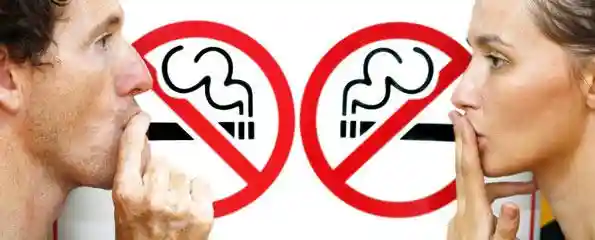Stopping smoking is a huge achievement, but staying smokefree is lifelong work. You’ll need to keep working at it if you encounter triggers to want to smoke, which are situations that make you crave a cigarette. For example, smoking triggers can be when you have a stressful day of work or as simple as smelling coffee brewing in the morning. Understanding and managing triggers is key to staying on the path to effectively staying quit and living a healthy smokefree life.
What Are Smoking Triggers?
These are smoking triggers, and they’re the cues that lead to a powerful urge to smoke. Triggers are the patterns associated with your smoking habit: they’re the physical, emotional or environmental cues that link your smoking with your routine, and therefore can make it difficult to separate the two.
Physical triggers may be the most straightforward. Would you automatically light up after your morning coffee or meal, during breaks at work? Those moments are likely to linger in your memories, and are potentially powerful triggers.
These emotional triggers are more subtle and harder to identify. A big problem for many smokers is that they use smoking to manage negative emotions such as stress, anxiety and boredom. They also use it to manage loneliness. If you feel stressed, anxious, bored or lonely, then smoking might become too tempting. You might feel that you need a cigarette. If you feel that way, this is probably because you have unwittingly conditioned yourself so that smoking represents a solution to emotional discomfort.
Environmental triggers are places, people or situations that you associate with smoking, such as being with other smokers, being in an environment where you have smoked before, or being at an event where people usually smoke like parties and concerts. Seeing or smelling cigarettes can also be a powerful trigger for smoking, especially in the first month of quitting.
Identifying Your Smoking Triggers
To manage triggers, first you have to identify your triggers, which means digging inside yourself and keeping an eye out for the behaviours, places, feelings and people who prompt you to smoke. It takes some mental hustle, but it must be done.
First, be aware of when and where your cravings are most intense. Keep a diary to record your cravings, noting what time of day and what you were doing and how you were feeling when the cravings struck. Over the course of a week or two, certain patterns will emerge. One day, you might notice that you always crave a cigarette right after you have eaten. Or when you are at work and feeling particularly stressed out.
An examination of your smoking history can also be useful. Remember what it was like when you were smoking regularly. When would you most often smoke? What time of day? What were your regular routines? What feelings were associated with smoking? G you be able to anticipate when you might have a craving and prepare ahead of time.
Strategies to Overcome Smoking Triggers
Now that you’ve identified your smoking triggers, it’s time to plan ways to manage or avoid them. This will involve behavioural changes, mindfulness, and sometimes a little creativity.
One of the most powerful habits to incorporate is changing your routine. If you always smoke with your morning coffee, try drinking tea or juice instead, or drink your coffee somewhere you associate it less with smoking. The point is to break the automatic association between the activity and the urge. Changing small aspects of your daily habits can weaken these associations, allowing you to withstand cravings over time.
For an emotional trigger, it’s helpful to identify healthier coping mechanisms for your feelings. Stress is often a trigger for smokers, so instead of smoking when you feel stressed, you should try some deep breathing to get you through the situation. Other alternatives include walking around the block or engaging in a physical activity, such as yoga, that can help you get some of the tension out of your system. Mindfulness and meditation can also help you cope with your emotional triggers. When you develop your ability to be fully present and in the moment, you can begin to notice your urges to smoke. As your tobacco use lessens, you are likely to experience a lot of your draw to smoke in a sudden burst or intense rush. But the reality is that the triggers are more subtle than you realise. The more you can recognise what is happening in your mind and body, the more you can respond differently, healthily and not turn to a cigarette.
Social situations might also be a struggle, especially if they involve smoking friends. Avoid situations when you know that you’ll be tempted to smoke (at least in the first few weeks), or try to prepare yourself mentally beforehand. Find something to keep your hands and mouth busy, such as chewing gum or a stress ball; limit your time in the smoking area; and remind yourself of why you’re quitting. Tell friendsre trying to do; most people will respect your effort and not smoke around you.
Environmental triggers, like places or activities, might require more explicit attempts to modify. If a certain place triggers the smoking urge, it might be necessary to spend time in that place less often, or find new places to spend time in that are smoke-free. As new smoke-free habits become routinised, these places will lose their association with smoking.
Building New, Healthy Habits
Avoiding smoking triggers is more than just dodging cigarettes. You must develop new healthy habits, and these habits support the decision to quit by making it easier to avoid smoking and its associated pleasures. For example, exercise is a wonderful way to reduce stress. It boosts a smoker’s mood when that mood is depressed by withdrawal. It can also distract from cravings. And exercise can help to avoid weight gain, which many people experience after quitting smoking.
Practicing mindfulness – say, through meditation or deep breathing – can help you stay cool and collected when you’re triggered. With time, you can learn to observe your thoughts and feelings without acting on impulses. You can disengage from and even resist cravings.
This is another key strategy: reward yourself for your little achievements. Quitting smoking is a big step forward, and you should celebrate that. Decide on some milestones you want to hit. Perhaps after one week you’ll say to yourself: ‘Wow, I didn’t light up once. That’s so great! I’m proud of myself. Yesterday was fantastic.’ And then celebrate by going out to dinner or getting yourself a new book or just spoiling yourself with a little something.
Conclusion
Quitting is a journey, not a destination. It takes the patience and perseverance to recover from failures according to your own schedule and needs. Ultimately, healing and recovery are about understanding your triggers, and learning how to escape their web. By learning to recognise your triggers and react with healthy coping strategies, you can master your cravings and your path to smoking cessation. And although it might not feel like it in the moment, every time you fight off a trigger you’re not only avoiding a cigarette, you’ suspension in the liminal state of quitting.
Keep your head in the game. Keep your head down. Keep your eye on the prize. Keep your feet moving. Keep up with the Joneses and the Smiths. Keep doing what you’re doing. Keep on keeping on. And always, keep your chin up. Above all, take note of how we collectively use ‘keep’ to motivate each other to persist, to continue, or to repeat an action. These speech acts reveal that we understand that keeping requires a certain effort. Even if we make no reference to that effort, we recognize that keeping something (a promise, one’s chin up, a head down) is a process that faces its fair share of challenges.

